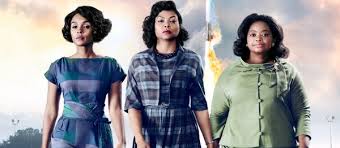Why “Hidden Figures” Is Such A Hit
 It isn’t just the fact that it is, while hardly a great movie, entertaining. It isn’t just the fact that it was put in wide release shortly before Martin Luther King Day. “Hidden Figures” is also number one (John Lewis’s books are also number one) because it taps into nostalgia for the Obamas — and intelligent African-Americans — as they leave office. There is a direct arc in contemporary American history from the glamorous white couple (Kennedys) in the White House to the glamorous black couple (Obamas) in the White House. “Hidden Figures” marks the beginning of the rise of recognition for the intellectual and cultural achievements of black Americans in the wider culture. For baby boomers, it evokes memories of duck-and-cover drills during the Cold War and of being shocked by Civil Rights TV footage of black
It isn’t just the fact that it is, while hardly a great movie, entertaining. It isn’t just the fact that it was put in wide release shortly before Martin Luther King Day. “Hidden Figures” is also number one (John Lewis’s books are also number one) because it taps into nostalgia for the Obamas — and intelligent African-Americans — as they leave office. There is a direct arc in contemporary American history from the glamorous white couple (Kennedys) in the White House to the glamorous black couple (Obamas) in the White House. “Hidden Figures” marks the beginning of the rise of recognition for the intellectual and cultural achievements of black Americans in the wider culture. For baby boomers, it evokes memories of duck-and-cover drills during the Cold War and of being shocked by Civil Rights TV footage of black
Americans being beaten. For younger audiences, “Hidden Figures” brings to life not only the buried accomplishments of black women but a time they thought they knew about but didn’t. “Hidden Figures” is set at the end of the Kennedy era (1963) but reminds us all too acutely of the end of the Obama era: class and optimism destroyed by violence.
